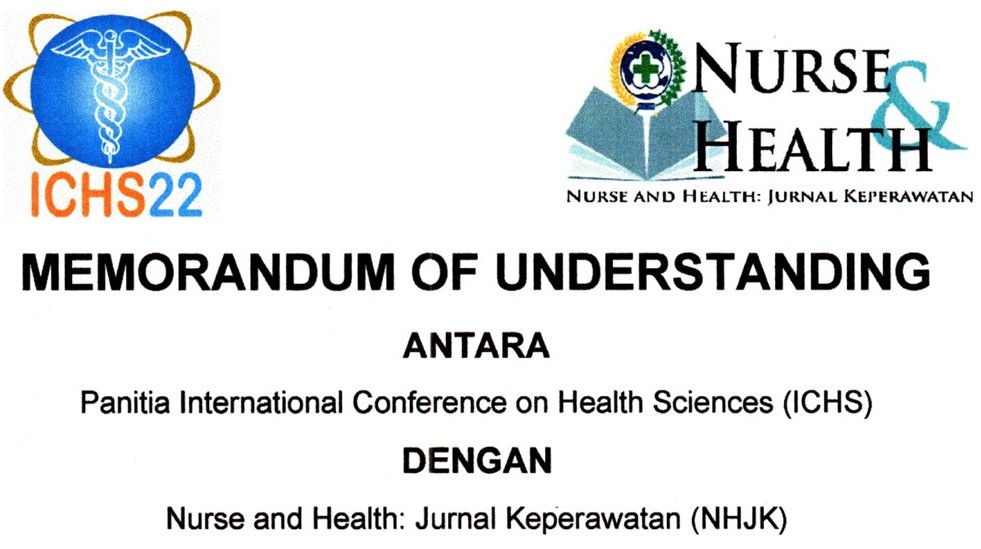COMPARISON OF VIDEO CALL INSTRUCTIONS AND VOICE CALLS IN INDONESIAN LANGUAGE ON CHEST COMPRESSION ONLY HAND POSITION
Abstract
Background: Out of Hospital Cardiac Arrest (OHCA) or cardiac arrest events that occur outside the hospital are the focus of world health problems which is often threaten a person's life. First aid that must be given quickly and precisely is Cardio Pulmonary Resuscitation (CPR). The rapid initiation of CPR with correct hand positioning by laypersons in cases of OHCA is critical for improving survival rates. Objectives: The purpose of this study was to compare the accuracy of the hand position of the lay rescuer when performing chest compressions only which was instructed through video calls and voice calls in Indonesian Language. Methods: This research was an experimental study. Sampling using probability sampling. The sample consists of 40 people who were divided into 2 groups, namely the instruction group via video call and voice call. Results: The results show that in the video call group there were as many as 9 people (45%) who performed hand placement during CPR correctly, while in the voice call group there were 13 people (65%). The statistical results using Mann Whitney test showed that there was no significant difference between video call and voice calls instructions in Language (p = 0.209). Conclusion: It needs the training for Emergency Medical Services (EMS) operator officers prior to conducting the study and the near real situations as the original incident in order to get more effective on performing chest compressions.Downloads
References
AHA Guidelines. (2019). Highlights. The Physician and Sportsmedicine, 24 (6), 31–32. https://doi.org/10.1080/00913847.1996.11440054 DOI: https://doi.org/10.1080/00913847.1996.11947965
Choi, H., Lee, CC, Kim, HJ, & Singer, AJ (2016). Identifying the optimal hand placement site for chest compression by measuring hand width and sternal length in young adults. American Journal of Emergency Medicine, 34 (3), 407–411. https://doi.org/10.1016/j.ajem.2015.11.008 DOI: https://doi.org/10.1016/j.ajem.2015.11.008
Eko, LD, & Setianingsih. (2020). Increasing Knowledge of Lay People About Handling Out of Hospital Cardiac Arrest Through Cardiopulmonary Resuscitation Applications on Smartphones. Kendal STIKES Scientific, 10 (1), 97–102.
Febriana H, A., Fajarini, YI, & Abdullah, AA (2018). The Effect of Cardiopulmonary Resuscitation (CPR) Training on Knowledge Levels in Class X Students at SMAN 1 Karangnom Klaten. Journal of Community Nursing Science, 1 (2).
Gupta, NK, Dantu, V., & Dantu, R. (2014). Effective CPR Procedure with Real Time Evaluation and Feedback Using Smartphones. IEEE Journal of Translational Engineering in Health and Medicine, 2 (October 2013), 1–11. https://doi.org/10.1109/JTEHM.2014.2327612 DOI: https://doi.org/10.1109/JTEHM.2014.2327612
Jiang, L., Min, J., Yang, F., & Shao, X. (2020). The optimal chest compression point on the sternum based on chest-computed tomography: A retrospective study. Hong Kong Journal of Emergency Medicine, 27 (4), 197–201. https://doi.org/10.1177/1024907919825779 DOI: https://doi.org/10.1177/1024907919825779
Jo, CH, Cho, GC, Ahn, JH, & Ryu, JY (2015). The importance of victim chest exposure during cardiopulmonary resuscitation: A simulation study. Journal of Emergency Medicine, 48 (2), 165–171. https://doi.org/10.1016/j.jemermed. 2014.09,040 DOI: https://doi.org/10.1016/j.jemermed.2014.09.040
Kleinman, ME, Brennan, EE, Goldberger, ZD, Swor, RA, Terry, M., Bobrow, BJ, Gazmuri, RJ, Travers, AH, & Rea, T. (2015). Part 5: Adult basic life support and cardiopulmonary resuscitation quality: 2015 American Heart Association guidelines update for cardiopulmonary resuscitation and emergency cardiovascular care. Circulation, 132 (18), S414–S435. https://doi.org/10.1161/CIR.0000000000000259 DOI: https://doi.org/10.1161/CIR.0000000000000259
Lin, Y., Chiang, W., Hsieh, M., Sun, J., Chang, Y., & Ma, MH (2018). Quality of audio-assisted versus video-assisted dispatcher-instructed bystander cardiopulmonary resuscitation: A systematic review and meta-analysis. Resuscitation, 123, 77–85. https://doi.org/10.1016/j.resuscitation.2017.12.010 DOI: https://doi.org/10.1016/j.resuscitation.2017.12.010
Muthmainnah, M. (2019). The Relationship between Level of Knowledge of Special Layman About Basic Life Support Based on Age Characteristics in RSUD X Hulu Sungai Selatan. Healthy-Mu Journal, 2 (2), 31. https://doi.org/10.35747/hmj.v2i2.235 DOI: https://doi.org/10.35747/hmj.v2i2.927
Yang, C., Wang, H., Chiang, W., Hsu, C., Chang, W., Yen, Z., Ko, PC, Chen, S., & Chang, S. (2009). Interactive video instruction improves the quality of dispatcher-assisted chest compression-only cardiopulmonary resuscitation in simulated cardiac arrests*. 37 (2). https://doi.org/10.1097/CCM.0b013e31819573a5 DOI: https://doi.org/10.1097/CCM.0b013e31819573a5
Yunanto, RA, Wihastuti, TA, & Rachmawati, SD (2017). Comparison of Rjp Training with Mobile Applications and Simulation of Knowledge and Skills To Do Rjp. NurseLine Journal, 2 (2), 183–193. DOI: https://doi.org/10.19184/nlj.v2i2.5943
Zhu, X., Gui, L., Xie, X., & Lin, Y. (2019). Influencing factors of telephone-cardiopulmonary resuscitation in China: A qualitative exploration based on managerial perspectives. BioRxiv. https://doi.org/10.1101/775874 DOI: https://doi.org/10.1101/775874
Copyright (c) 2024 Maulidah, Ruri Virdiyanti, Abdurahman Wahid, Emelia Rahmawati

This work is licensed under a Creative Commons Attribution-NonCommercial 4.0 International License.
Authors who publish with Nurse and Health: Jurnal Keperawatan agree to the following terms:
- Authors retain copyright licensed under a Creative Commons Attribution-NonCommercial 4.0 (CC BY-NC 4.0), which allows others to remix, tweak, and build upon the authors' work non-commercially, and although the others' new works must also acknowledge the authors and be non-commercial, they don't have to license their derivative works on the same terms.
- Authors are permitted and encouraged to post their work online (e.g., in institutional repositories or on their website) prior to and during the submission process, as it can lead to productive exchanges, as well as earlier and greater citation of published work (See The Effect of Open Access). Authors can archive pre-print and post-print or publisher's version/PDF.







_resize1.jpg)















